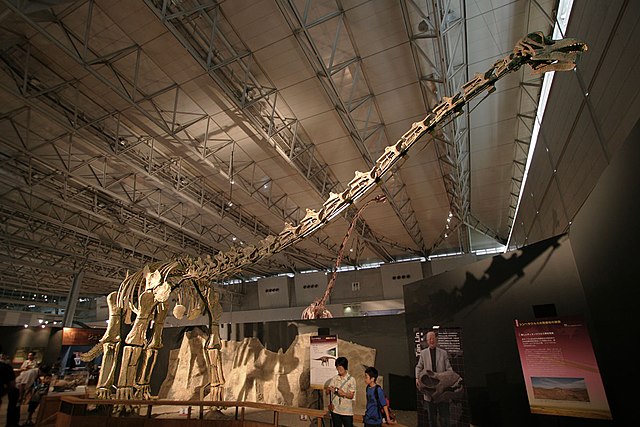Nemegtosaurus was a sauropod dinosaur from the Late Cretaceous Period of what is now Mongolia. It was named after the Nemegt Basin in the Gobi Desert, where the remains — a single skull — were found. The skull resembles diplodocoids in being long and low, with pencil-shaped teeth. However, recent work has shown that Nemegtosaurus is in fact a titanosaur, closely related to animals such as Saltasaurus, Alamosaurus and Rapetosaurus.
Nemegtosaurus
Vertebrae that may belong to Nemegtosaurus
Speculative full body restoration
Restoration of the head
Titanosaurs were a diverse group of sauropod dinosaurs, including genera from all seven continents. The titanosaurs were the last surviving group of long-necked sauropods, with taxa still thriving at the time of the extinction event at the end of the Cretaceous. This group includes some of the largest land animals known to have ever existed, such as Patagotitan—estimated at 37 m (121 ft) long with a weight of 69 tonnes —and the comparably-sized Argentinosaurus and Puertasaurus from the same region.
Titanosauria
Excavation of titanosaur fossils at the Lo Hueco fossil site in Spain
Unnamed titanosaur from Japan labelled "Xinghesaurus"
Ampelosaurus, a titanosaur with osteoderms, depicted with the osteoderms arranged in a pair of rows








